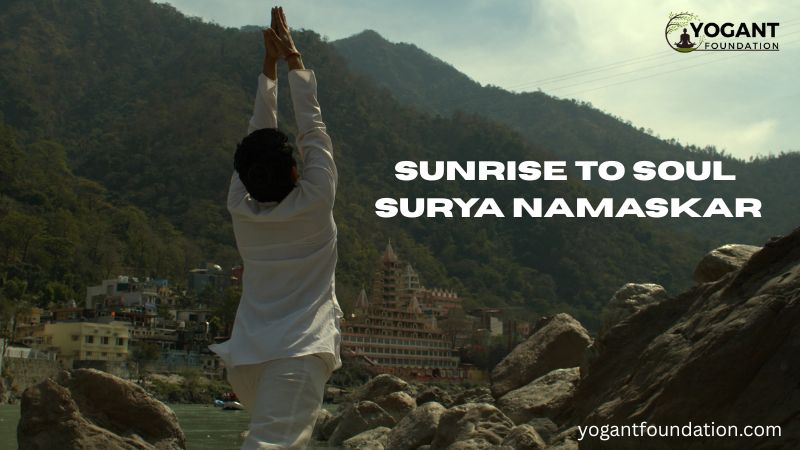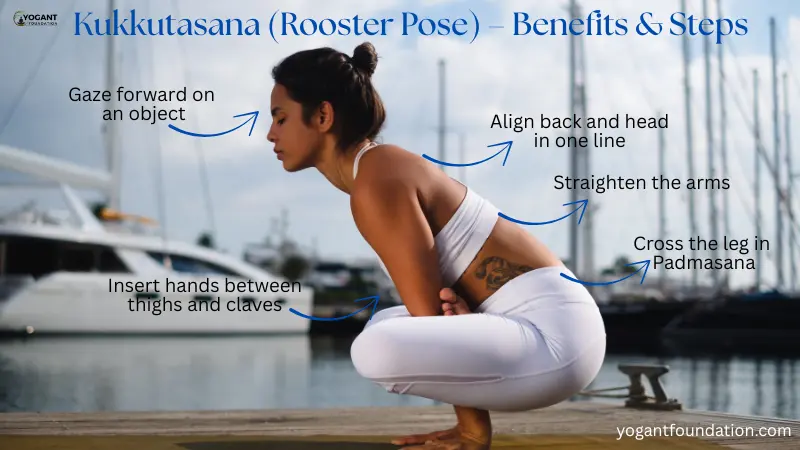Namaste to our beloved friends! Have you ever been to Rishikesh, felt the soft wind from the Ganges, and had a deep sense of peace wash over you?
What is Padmasana?
Similar to a lotus blooming from the mud, our true peace comes from within. There are many possibilities that exist and open for you when you are in the peace of your heart.
In the spiritual paradise of the Himalayas, we discover that yoga is much more than poses of yoga asanas.
It captures our inner peace. Padmasana, often known as the lovely Lotus Pose, is at the core of this comfort.
In truth, Padmasana is more than about flexibility. It is a deep access for improving meditative states of being.
For all those who are new to the yoga journey or have experienced what feels like a lifetime of yoga and want to develop and refine your seat.
This guide offered by our Rishikesh ashram will serve you well.
Padmasana Benefits – Lotus Pose Benefits
More Than Just a Pose—A Journey to Well-Being
The Padmasana benefits occur when we sit in it. When it becomes an atmosphere of health that flows into our experiences. A totality that extends beyond the physical.
On one level (the physical), Padmasana is a lovely hip-opening pose. It stretches the ankles and knees while improving hip flexibility and range of motion.
All key for staying in a seated position because of your own comfort (rather than having to shift around uncomfortably).
Padmasana strengthens your spine for an upright and graceful position, which can also relieve common back pain.
The slight pressure on the pelvic area (as if you can’t relieve gas!) keeps the abdominal organs gently supported, perhaps stimulating circulation and digestion.
Most importantly, the pose encourages such an extraordinary sense of stability, allowing your entire nervous system to fully relax and settle. It is a natural antidote for stress.
The effects of Padmasana can also influence you mentally and emotionally. The strong base of the pose will steady your mind and deepen the focus of your awareness.
As a way to attain gentle stillness of mind, it is a satisfying method to curb the persistent chatter of your daily worries.
In Rishikesh we know, and try to remind ourselves, that authentic yoga is about self-awareness. Padmasana, at some point in your own experience, may help you feel more connected to your true self.
Spiritually, Padmasana Benefits as the best base for meditation and Pranayama (breathing exercises).
With its sturdy base, energy can move freely, allowing for the awakening and balancing of the lower chakras—Mooladhara (root) and Swadhisthana (sacral).
It is believed to be the finest posture for anyone on a spiritual path since it represents the peacefulness and depth found on the Ganges’ banks.
Lotus Pose- How to do Padmasana?
Step-by-Step Guide From the Banks of the Ganges
Taking the journey towards Padmasana, it is important to remember to be patient and respectful to your body. It is not necessarily about getting into this shape, socket force, but gently coaxing! Here are our simple instructions that were offered to the students in order to help them adopt this beautiful posture.
Preparation: Before you tune into Padmasana, you need to get the hips and knees warm. You could do some butterfly pose (Baddha Konasana) or a half butterfly (Ardha Titali Asana). As always, listen to your body, and if it starts to hurt, don’t push into it.
The Journey to the Lotus:
Start in Dandasana (Staff Pose): Sit comfortably on your mat so your legs are extended straight out in front of you with your spine tall and hands resting next to your hips. This is your base.
Fold the Right Leg: Slowly bend your right knee and bring your right foot towards your left hip crease. The right foot will be resting flat with the sole of your right foot facing up and your heel close to your lower abdominal area. Be mindful of your knee; if you feel strain, listen to your body and don’t push past comfort.
Fold the Left Leg: Slowly lift your left foot up and place it on your right thigh, as close to your right hip crease as you feel comfortable, sole again facing upwards.
Hand placement: Once you feel comfortable with placing both feet, rest your hands gently on your knees (commonly in Jnana Mudra, with the thumb and index finger touching) or Chin Mudra.
Spinal Stretch & Gaze: Try and lengthen your spine while drawing your shoulders back & down and tuck your chin forward towards your chest. Allow your gaze to be soft & inward or gently focused on the tip of your nose.
Breath: Once you feel stable, deepen your breathing, slow & steady, with a focus on relaxing your breath using diaphragmatic breathing.
Important Tips for Beginners:
Patience: Don’t be in a hurry. Flexibility comes from a steady, gentle effort.
Modifications: If full Padmasana is inaccessible, try Ardha Padmasana (Half Lotus—one leg is folded) or simply use Sukhasana (Easy Pose), sitting on a cushion or blanket to raise the hips. Remember, the use of props is not a sign of weakness; rather, it is a smart and helpful way to provide support to your practice.
Types of Padmasana?
Please refer to the Lotus Family.
When most people think of Padmasana, they envision the traditional version. You may also experience other great varieties of Padmasana as you progress in your practice:
Ardha Padmasana- Half Lotus Pose
This is often the first step for many. Rather than both feet on the thighs, one foot rests on the opposite thigh; meanwhile, the other foot remains on the ground or is tucked under the opposite thigh. It has many of the same benefits as the full pose but is much more accessible for allowing the hip and knee to open with flexibility.
Baddha Padmasana- Bound Lotus Pose
This is an advanced position. When you are able to set up in full Padmasana, you reach around behind your back to hold your big toes, which takes a lot of shoulder and upper back extensibility along with the deep hip opening. Baddha Padmasana is often practiced to draw attention inward (introspection) and often in conjunction with certain pranayama practices.
Urdhva Padmasana- Lifted Lotus Pose & Kukkutasana- Cock or Rooster Pose
This, too, is a very advanced arm balance in which, from Padmasana. You bring your arms through the space created between your thighs and calves. Press into the floor with your hands and lift your entire body off the floor through your arms. Urdhva Padmasana requires a huge amount of core control, strength, and balance.
Please take note: Only try these advanced variations with the supervision of a qualified yoga instructor!
Embracing the Lotus Pose Within
Whether you are practicing Padmasana for meditation, well-being, or spirituality, it is important to remember that consistency is your best friend. It doesn’t have to be an hour-long session each day—even just a few moments a day will help. The calm and quiet you will experience on the mat in this pose will begin to affect every aspect of your life.
Listen to your body, be patient, and trust in the process. Just as the lotus flower blossoms beautifully and delicately, your practice will take shape at its own pace.
Are you ready to deepen your yoga practice with us? Please check out our courses at Yogant Foundation in Rishikesh to experience the transformational and authentic aspects of yoga in person. Please feel free to share your Padmasana journey or any other questions in the comments below—we would love to hear from you!





One thought on “Padmasana- Benefits, Types & How to do”